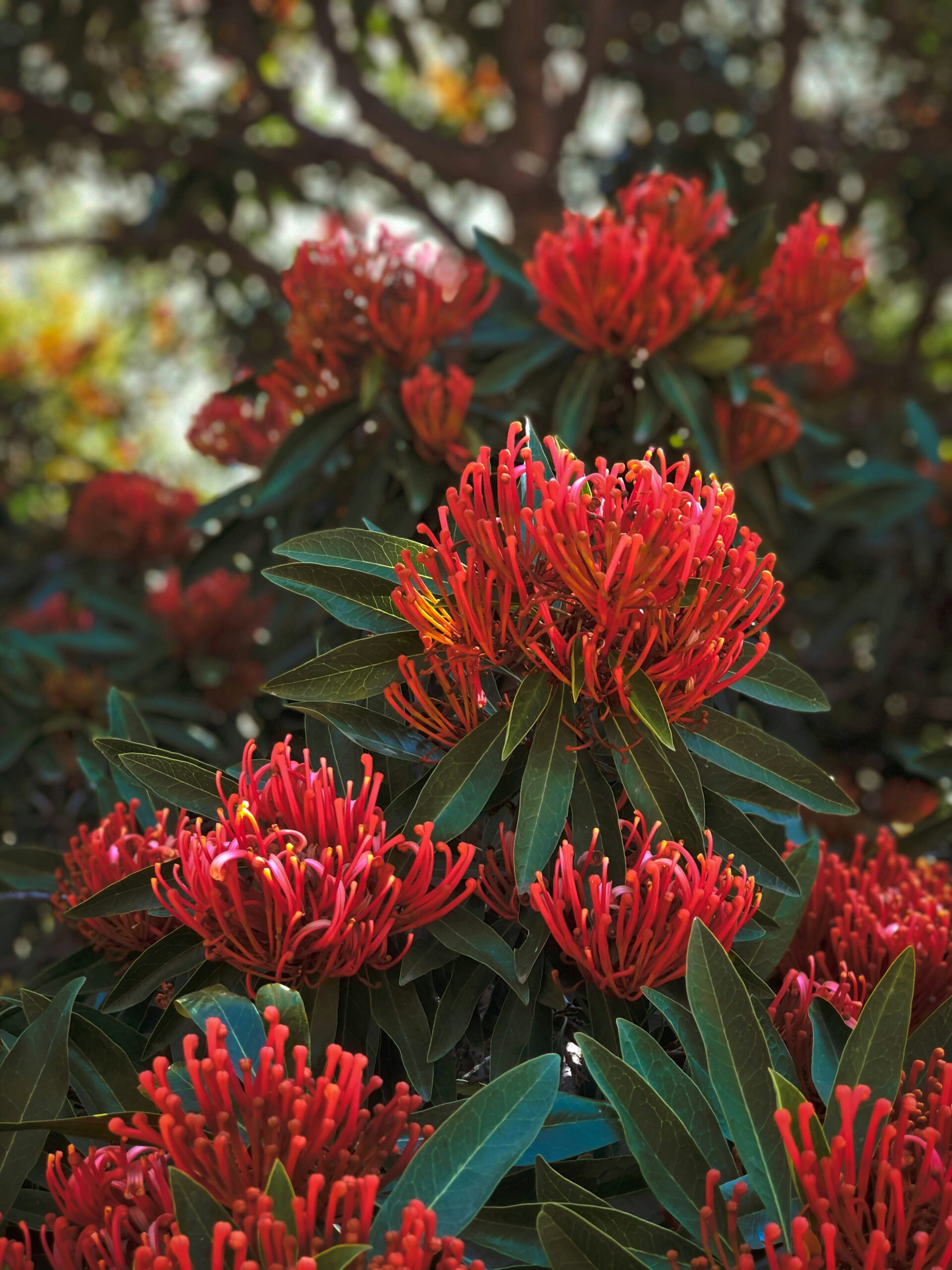Tradescantia, also known as spiderwort or inch plant, is a common sight in gardens and homes around the world. Its popularity is largely due to its ease of cultivation and visually striking presence.
However, aside from its well-known image, Tradescantia possesses a collection of special qualities that set it apart from other plants.
Tradescantia possesses several extraordinary qualities that make it a remarkable species in the plant kingdom. From its resilience to its versatility, this plant amazes casual gardeners and plant experts alike. Let’s explore six unbelievable traits that make Tradescantia stand out.
1) Historical Significance
Tradescantia has a rich history in botany and horticulture. The plant was introduced to Europe in the 17th century as an ornamental species. This introduction marked a significant moment in botanical exploration.
The plant’s arrival in Europe showcased the growing interest in exotic flora during that time. Botanists and plant enthusiasts were eager to study and cultivate new species from the Americas.
Tradescantia quickly gained popularity for its unique appearance and ease of growth. Its spread across Europe highlights the plant’s adaptability and appeal to gardeners and researchers alike.
The genus Tradescantia was named after John Tradescant, an English naturalist and gardener. This naming reflects the plant’s importance in botanical circles and its role in advancing horticultural knowledge.
2) Chromosomal Interest of Tradescantia
Species of Tradescantia have distinct chromosomal features that intrigue scientists, making them excellent subjects for genetic research.
These plants illustrate evolutionary changes in both the structure and number of chromosomes, drawing particular interest from those who study cell genetics.
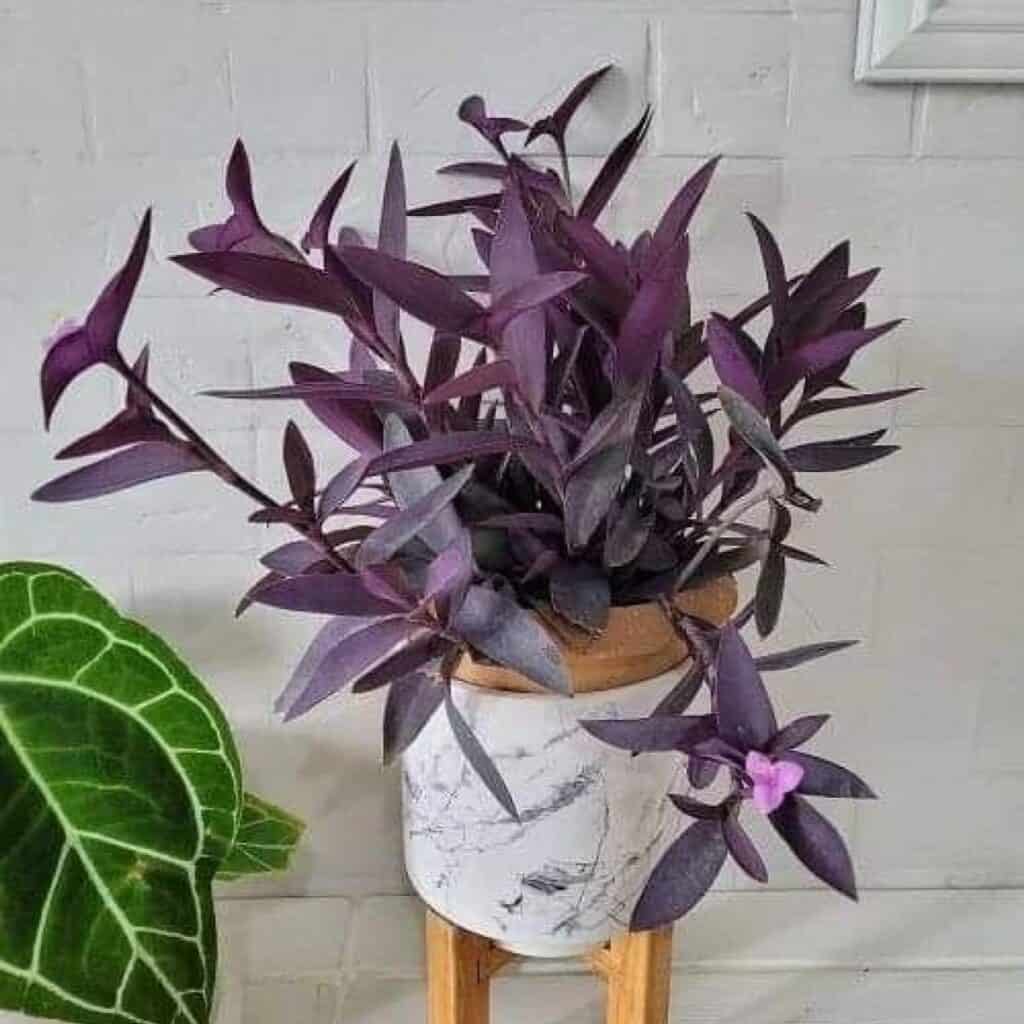

The chromosomes found in Tradescantia cells demonstrate uncommon splitting behaviors, starting with the formation of axial vacuoles that evolve into openings in the chromatin thread.
Similar observations have been made in both Tradescantia and Vicia species, showcasing this interesting phenomenon.
In Tradescantia virginiana, for instance, researchers have identified a variety of chromosome types, including subterminal, small submetacentric, and telocentric chromosomes.
These different configurations offer valuable insights into the genetics and evolution of plants. The unique chromosomal characteristics of Tradescantia make them an ideal material for research into genetic mutations and the evolutionary progression of plants.
Through the study of these plants, scientists gain a deeper understanding of how chromosomes evolve over time and how these evolutionary changes influence plant traits.
3) Bioindicator Abilities of Tradescantia
Tradescantia plants have a unique talent that sets them apart from many other houseplants. Some species can act as bioindicators for environmental mutagens.
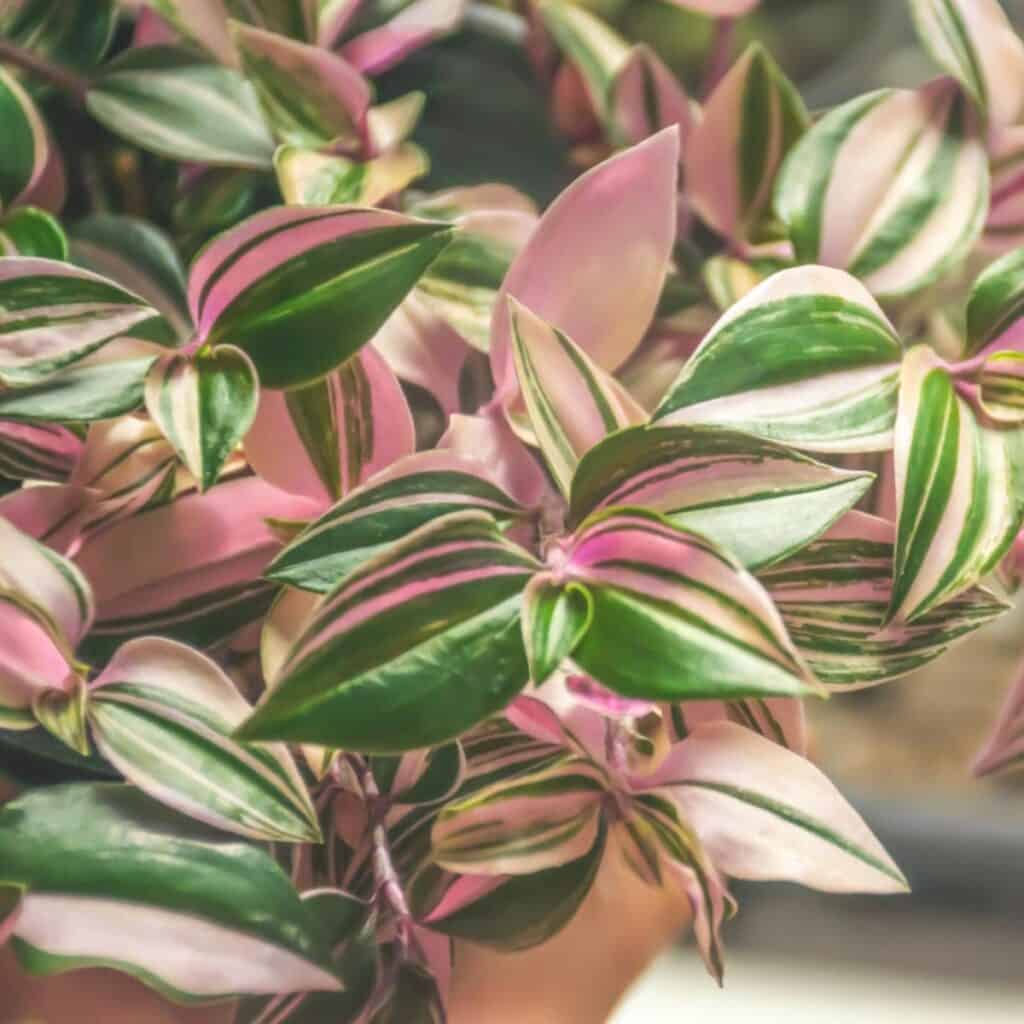

This means they can detect harmful changes in their surroundings. Scientists use these plants to check for pollution and other environmental issues.
The plant’s cells change in visible ways when exposed to certain toxins. This makes Tradescantia a valuable tool for monitoring air and soil quality.
Researchers often use Tradescantia in studies about environmental health. The plant’s sensitivity to mutagens helps scientists spot potential problems early on.
This special ability of Tradescantia shows how important plants can be for science. It also highlights the need to protect and study different plant species.
4) Cultural and Mythological References
Tradescantia plants have interesting cultural connections. One common name for some species is “wandering Jew.” This name comes from a Christian legend, though it’s now seen as controversial.
The myth tells of a man who taunted Jesus and was cursed to wander the Earth. This story became linked to the trailing nature of certain Tradescantia plants.
Today, many people avoid using this name due to its potentially offensive nature. Instead, they opt for names like “wandering dude” or simply use the scientific name Tradescantia.
This shift shows how plant names can reflect changing cultural attitudes. It also highlights the importance of being mindful when using common plant names.
5) Unique Floral Characteristics of Tradescantia
Tradescantia flowers have some unusual features. They typically have three petals: blue, purple, or white. These petals form a triangular shape when fully open.
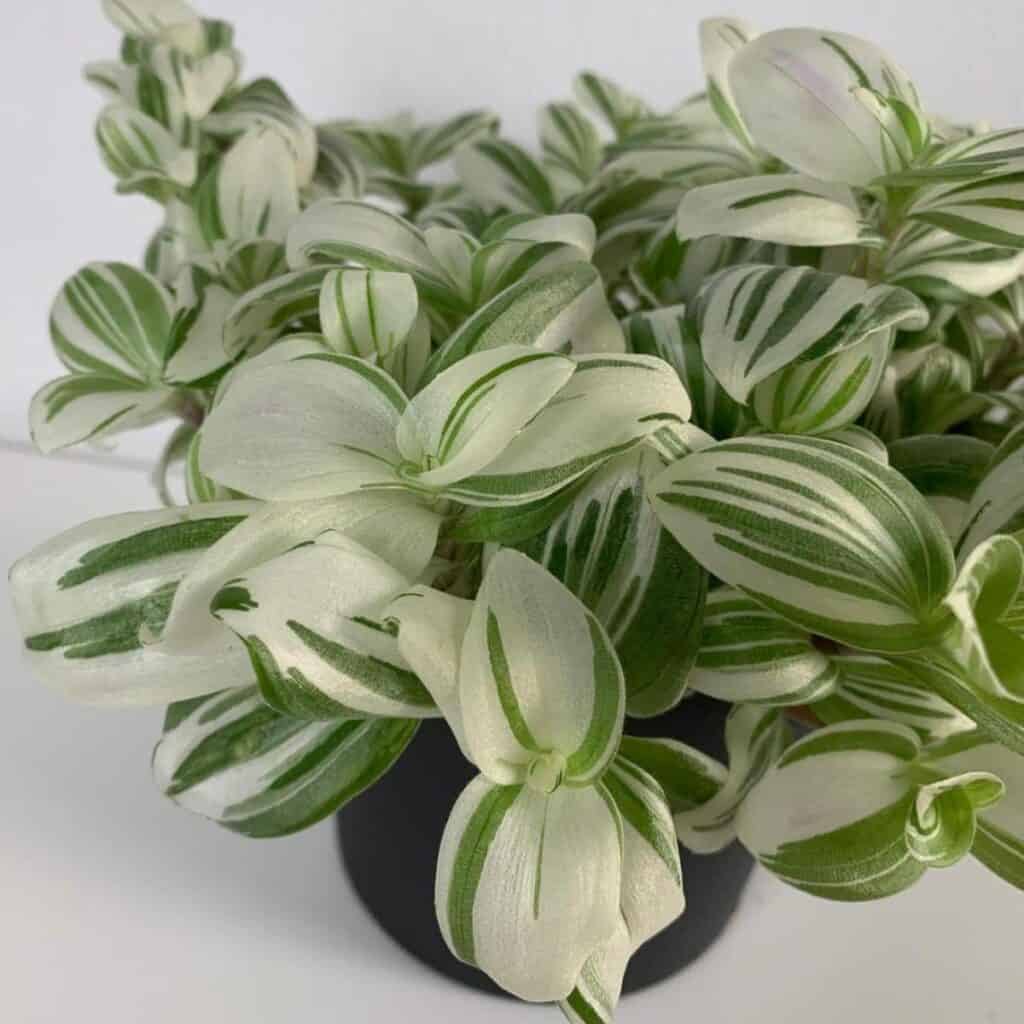

The blooms are known for their short lifespan. Each flower usually lasts only one day. This brief display adds an interesting element to the plant’s appeal.
Tradescantia flowers also have distinctive stamens. These male parts of the flower are covered in fine hairs. The hairs give the stamens a fuzzy appearance.
Many Tradescantia species produce flowers throughout the growing season. This extended blooming period provides ongoing visual interest. The plants often have multiple flowers open at once, creating a colorful display.
6) Tradescantia and Variegated Foliage
Tradescantia plants are known for their striking variegated foliage. Many varieties display leaves with beautiful patterns of green, white, and purple stripes.
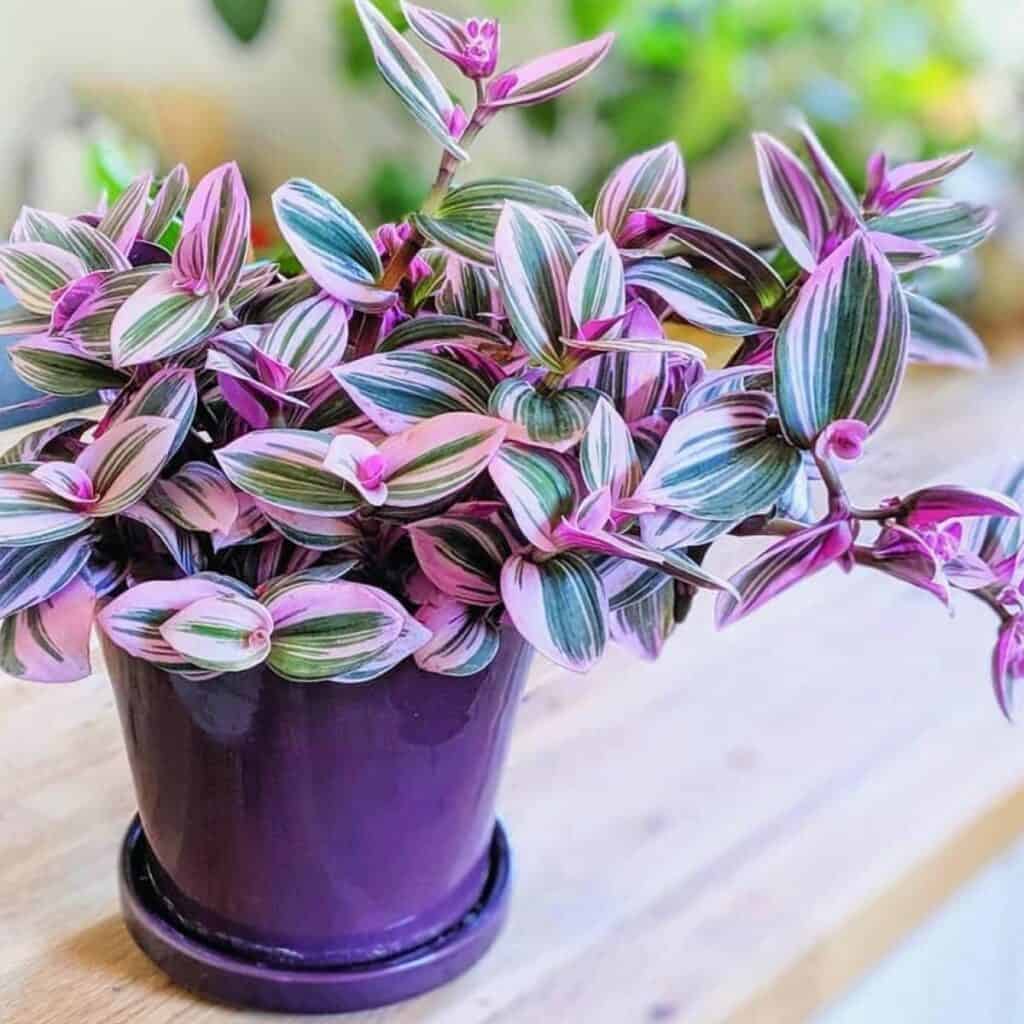

One popular type is Tradescantia zebrina. Its leaves have bold green and silver stripes with purple undersides. This creates a stunning visual effect as the plant grows.
The variegated leaves of Tradescantia make it a versatile choice for gardeners. These plants add color and interest to both indoor and outdoor spaces.
Some Tradescantia varieties have leaves with pink or burgundy tones. This gives gardeners even more options for creating eye-catching plant displays.
Origins and History
Tradescantia plants have a rich history dating back centuries. These plants were first found in the Americas and later spread around the world.
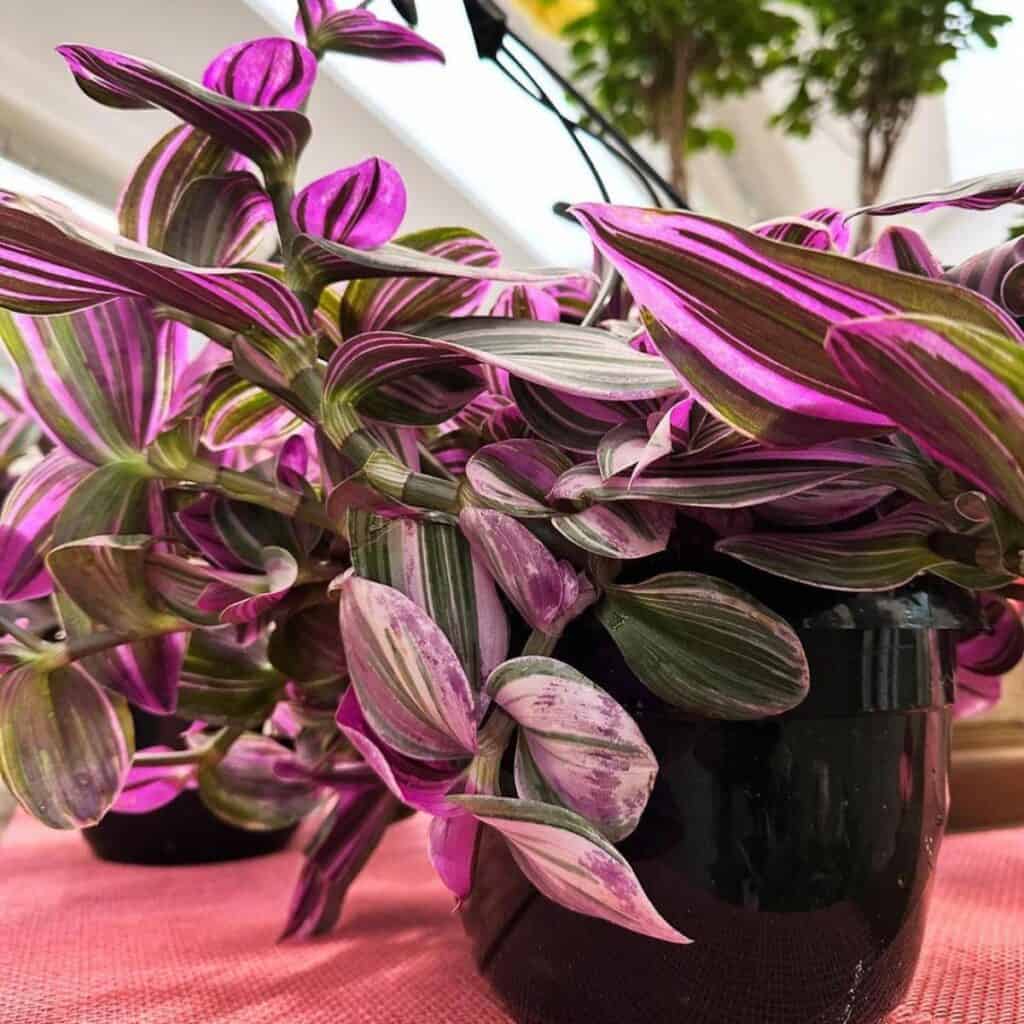

Discovery and Naming
Tradescantia was discovered in North and South America. The genus got its name from John Tradescant, an English naturalist and gardener. He lived in the 17th century and was key in bringing these plants to Europe.
There are about 75 species in the Tradescantia genus. They belong to the Commelinaceae family. These plants grow wild in many parts of the Americas, from Canada to Argentina.
Tradescantia plants have many common names. Some popular ones are:
Cultural Significance
Tradescantia plants have been important in various cultures for a long time. Native American tribes used some species for food and medicine.
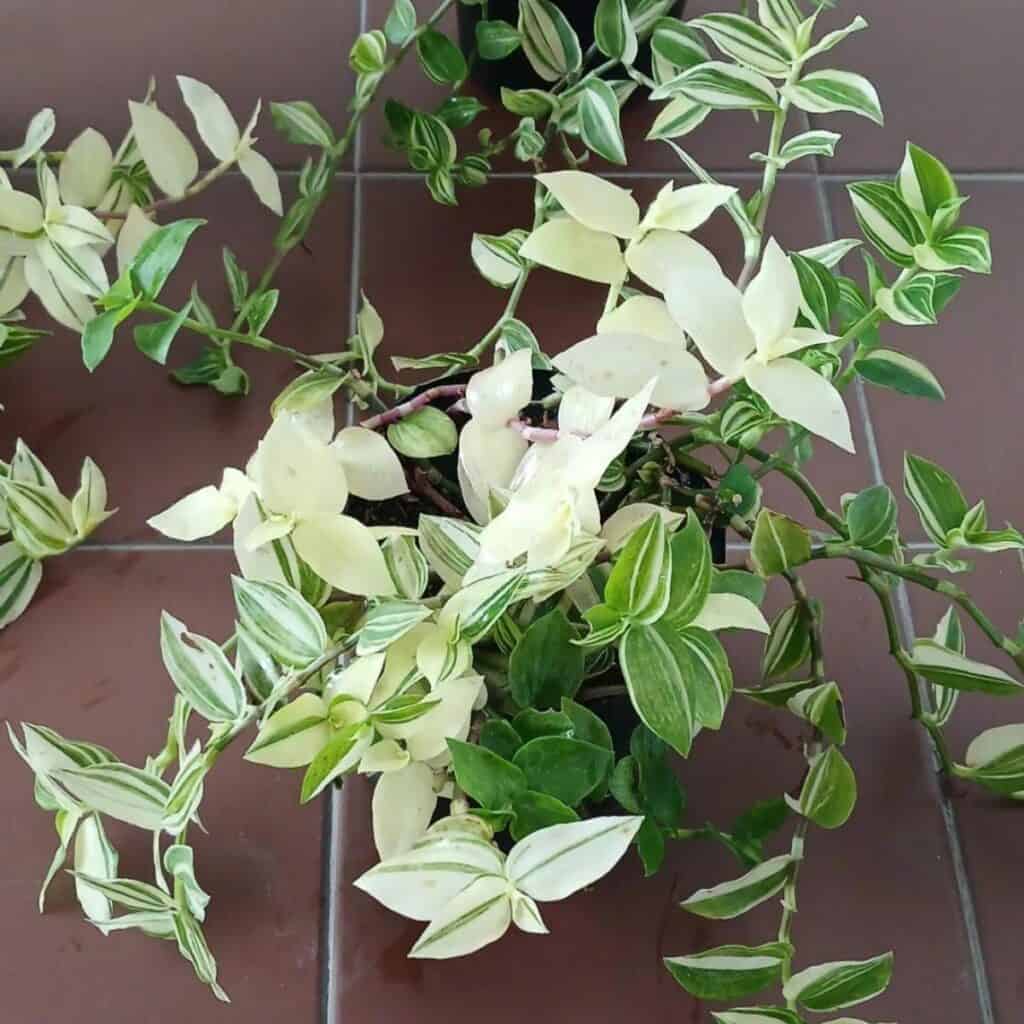

In modern times, Tradescantia has become a popular houseplant worldwide. People love it for its colorful leaves and easy care. The plant’s ability to grow quickly and adapt to different settings has made it a favorite among gardeners.
Some Tradescantia species have played a role in scientific research. They have been used to study plant genetics and cell biology.
Physical Characteristics
Tradescantia plants have eye-catching features that set them apart from other houseplants. Their leaves, growth patterns, and flowers make them unique additions to any indoor space.
Leaf Patterns and Colors
Tradescantia leaves come in a wide range of stunning patterns and colors. Many varieties have striped leaves in purple and silver, creating a striking visual effect. Some types feature green leaves with white or pink stripes.
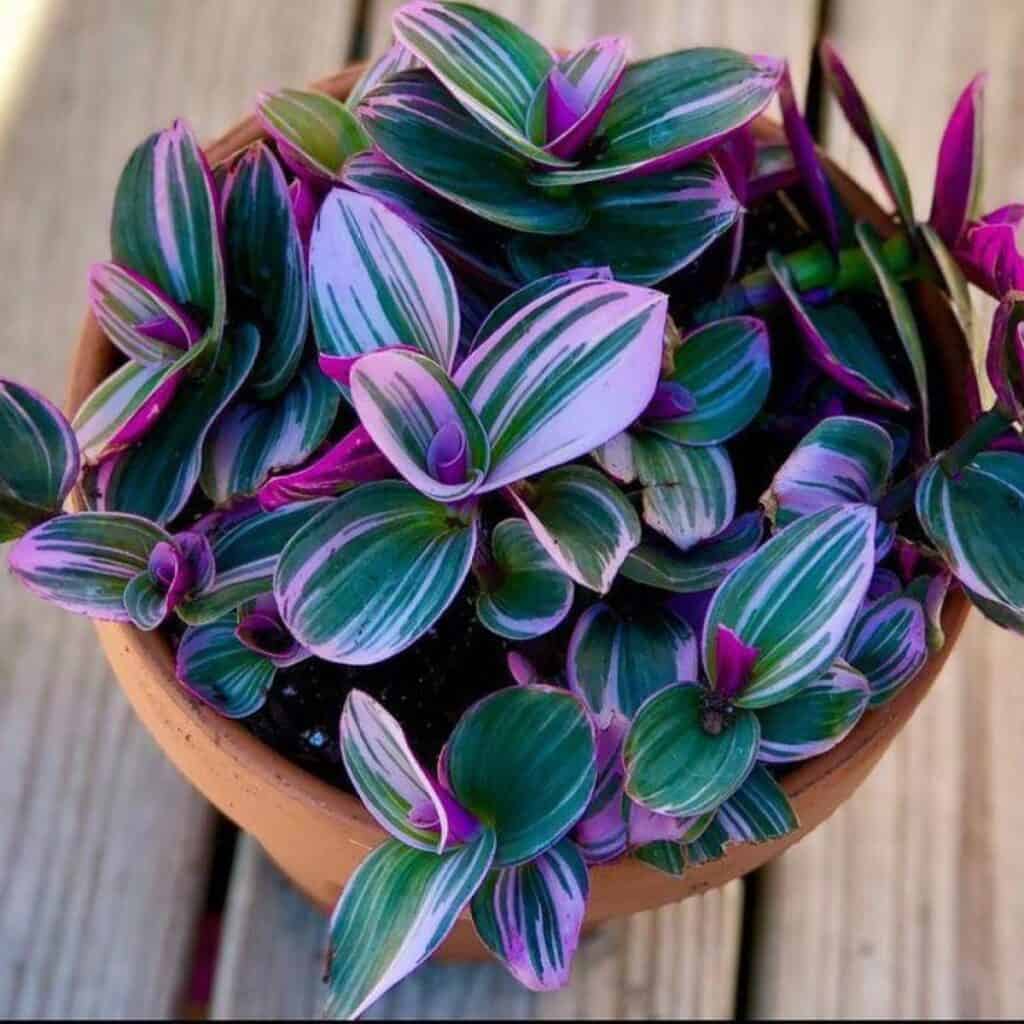

The ‘Tricolor’ variety displays a mix of green, white, and pink on its foliage. This colorful blend makes it a popular choice for plant enthusiasts.
Leaf shapes vary among Tradescantia species. Some have long, thin leaves, while others boast wider, more rounded foliage. The diversity in leaf appearance adds to the plant’s appeal.
Growth Habits
Tradescantia plants are known for their trailing growth habit. They form cascading vines that can reach several feet in length. This makes them perfect for hanging baskets or climbing plants.
Some varieties, like the Tradescantia sillamontana, have a more compact growth pattern. These types form dense, bushy clumps instead of long trailing vines.
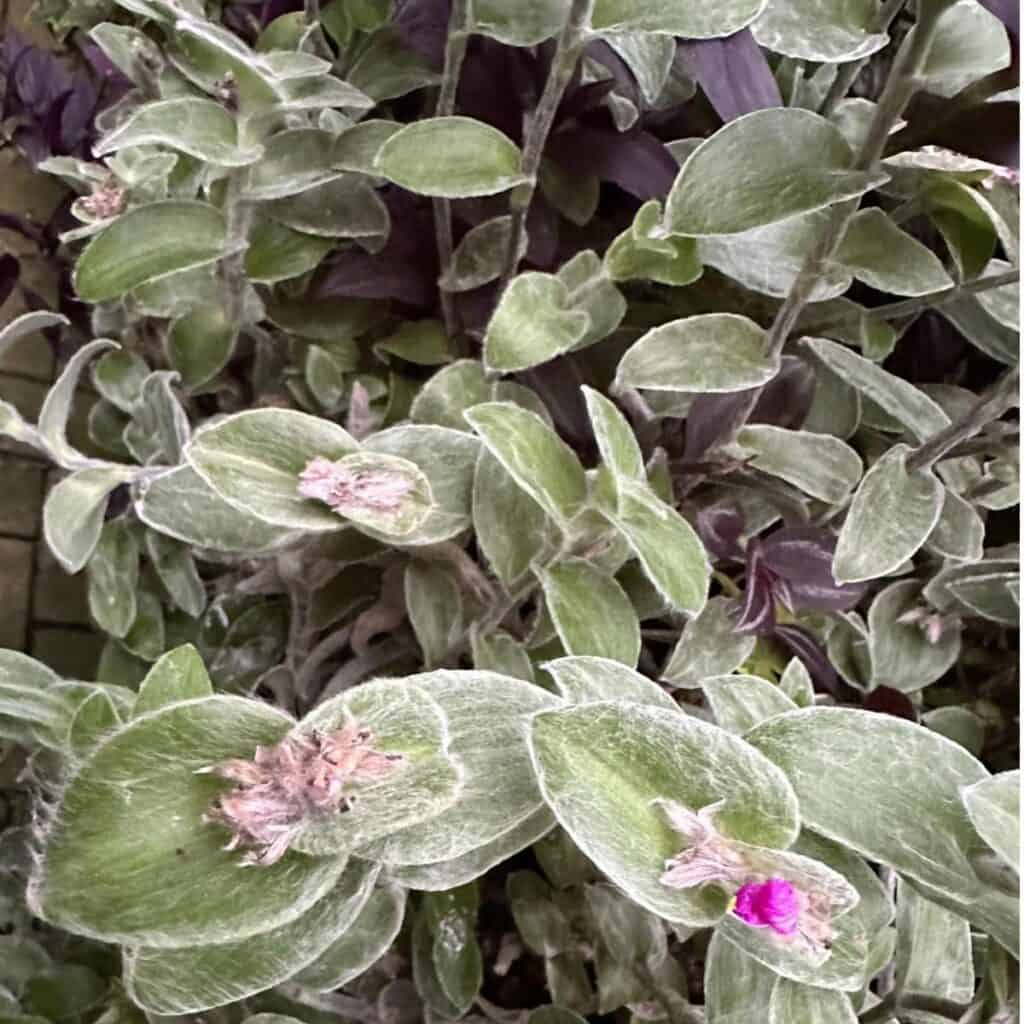

Tradescantia plants grow quickly under the right conditions. They can easily fill out a pot or spread as ground cover in outdoor gardens.
Flowering Traits
While Tradescantia are mainly grown for their foliage, many species produce small, delicate flowers. These blooms typically have three petals and come in shades of purple, pink, or white.
The Virginia spiderwort is known for its blue to purple flowers. These blossoms open in the morning and close by afternoon, creating a daily show of color.
Flowering usually occurs in spring and summer. The blooms, though small, add a touch of elegance to the plant’s already attractive foliage.
Botanical Importance
Tradescantia plants offer significant value to ecosystems and human health. These versatile plants contribute to air quality and have potential medicinal applications.
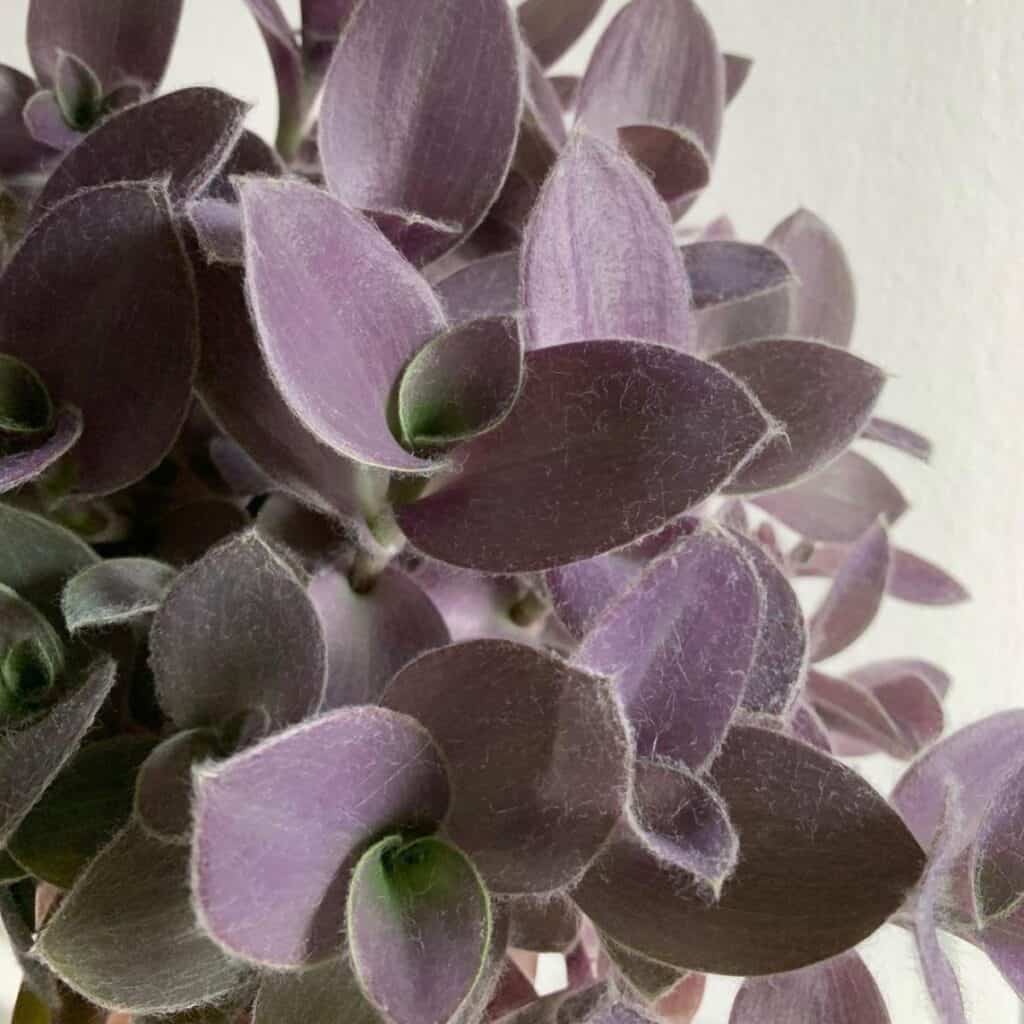

Environmental Benefits
Tradescantia plants are excellent air purifiers. They can remove harmful toxins like formaldehyde and benzene from indoor air. This makes them valuable for improving air quality in homes and offices.
These plants also help increase humidity levels. Higher humidity can reduce respiratory issues and improve overall comfort in dry environments.
Tradescantia species are often used in erosion control. Their fast-growing nature and ability to spread quickly make them effective at stabilizing soil on slopes and hillsides.
Some Tradescantia varieties are useful as groundcover in gardens. They can suppress weed growth and retain soil moisture, reducing the need for frequent watering.
Medicinal Uses
Tradescantia plants have been used in traditional medicine for centuries. Some species are believed to have anti-inflammatory properties.
The leaves of certain Tradescantia varieties are used to make poultices. These are applied to cuts, burns, and insect bites to promote healing.
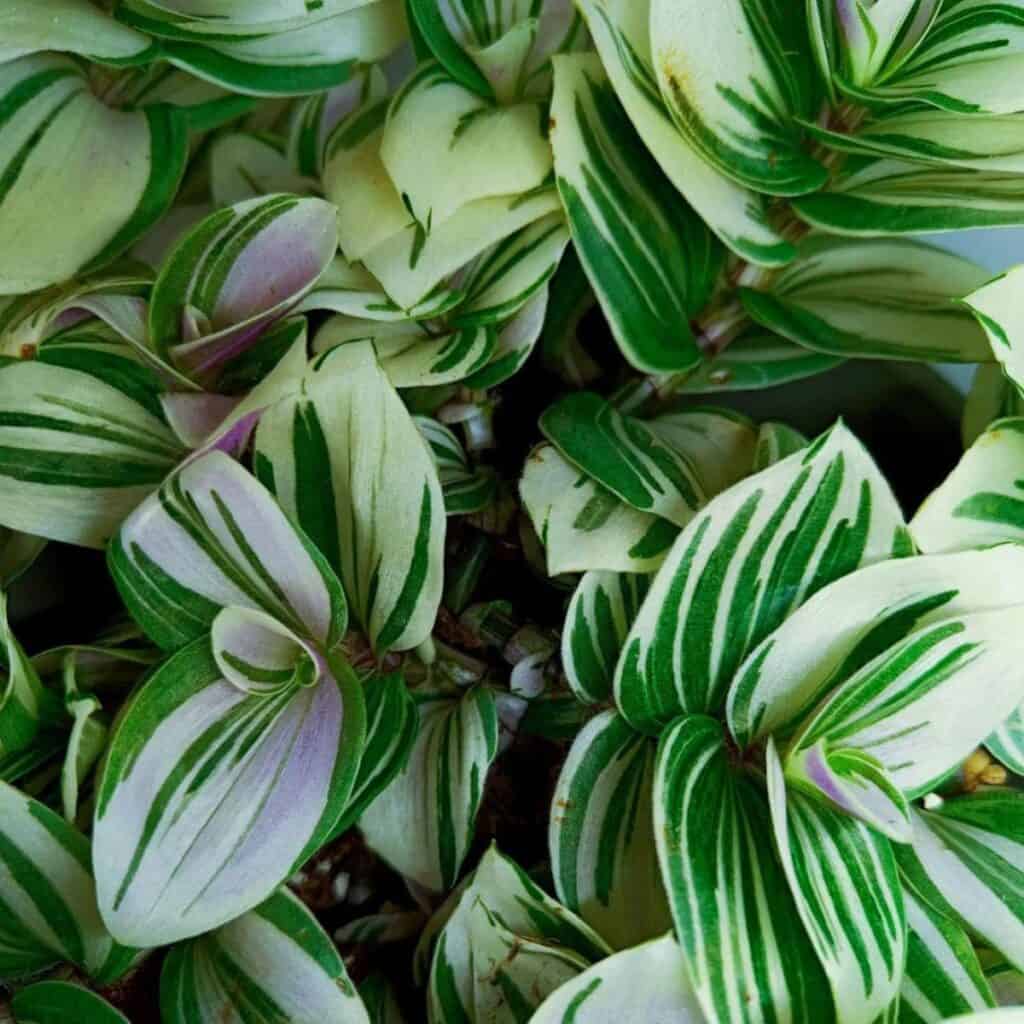

Some indigenous cultures use Tradescantia in teas or infusions. These preparations are thought to help with digestive issues and respiratory problems.
Research is ongoing to explore the potential of Tradescantia in modern medicine. Scientists are studying their compounds for possible use in new treatments.
However, note that the medicinal use of Tradescantia should only be done under professional guidance. Some species can cause skin irritation in sensitive individuals.
Frequently Asked Questions
Tradescantia plants possess unique traits that set them apart from other houseplants. These traits include distinctive leaf patterns, medicinal uses, and cultural significance.
What unique attributes distinguish Tradescantia plants from other houseplants?
Tradescantia plants stand out due to their trailing growth habit and colorful foliage. They adapt well to various indoor environments and can be used as ground cover or in hanging baskets.
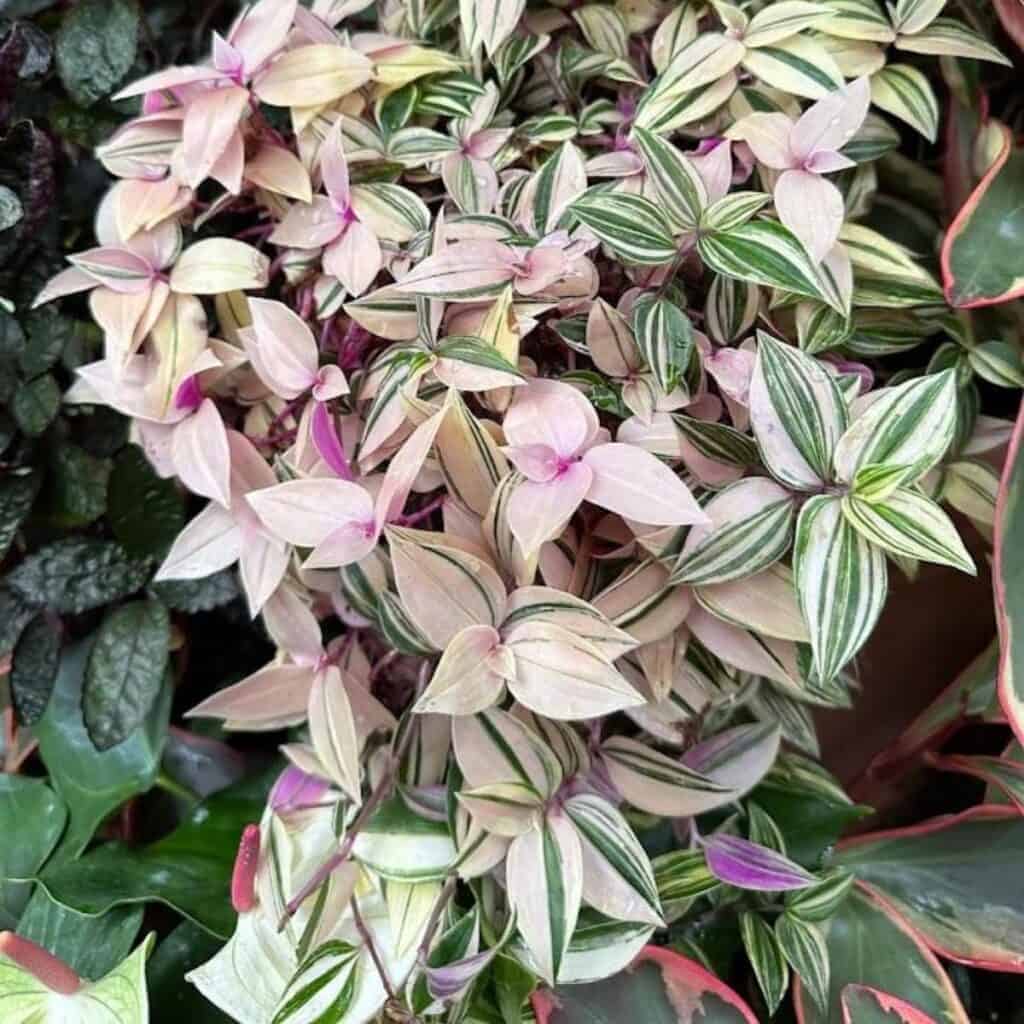

Their fast growth rate and easy propagation make them popular among plant enthusiasts.
How do the leaves of Tradescantia species display distinct coloration patterns?
Tradescantia leaves often show striking color combinations. For example, Tradescantia zebrina has purple and silver-striped leaves.
Other varieties may display green, pink, or white variegation. These patterns can change based on light exposure and care conditions.
Can Tradescantia plants be used for medicinal purposes, and if so, what are they?
Some Tradescantia species have been used in traditional medicine. Native American tribes used certain species to treat digestive issues and skin conditions.
More research is needed to verify these medicinal properties and their effectiveness in modern treatments.
What is the significance of the Tradescantia genus in botanical taxonomy?
The Tradescantia genus is important in plant classification. It belongs to the Commelinaceae family and includes about 75 species.
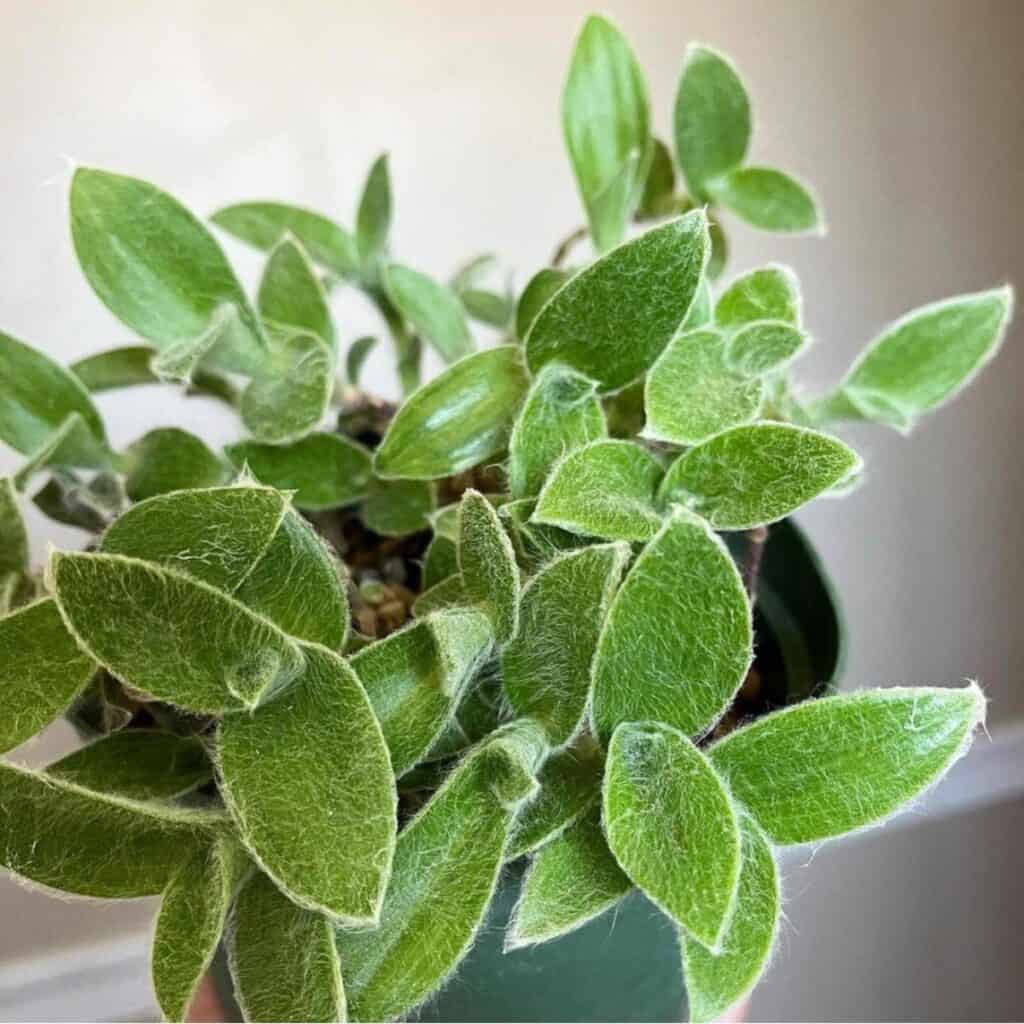

Tradescantia plants have been used in genetic studies due to their unique chromosomal characteristics.
How does one properly care for a Tradescantia plant with variegated foliage?
Variegated Tradescantia plants need bright, indirect light to maintain their colorful patterns. They thrive in well-draining soil and prefer moderate watering.
Regular pruning helps maintain their shape and promotes fuller growth. Fertilize monthly during the growing season for best results.
What symbolism is associated with the Tradescantia, also known as spiderwort?
In some cultures, Tradescantia symbolizes love and affection. The common name “spiderwort” comes from the plant’s tendency to produce threadlike sap when cut.
Some believe these plants bring good luck and positive energy to a home.
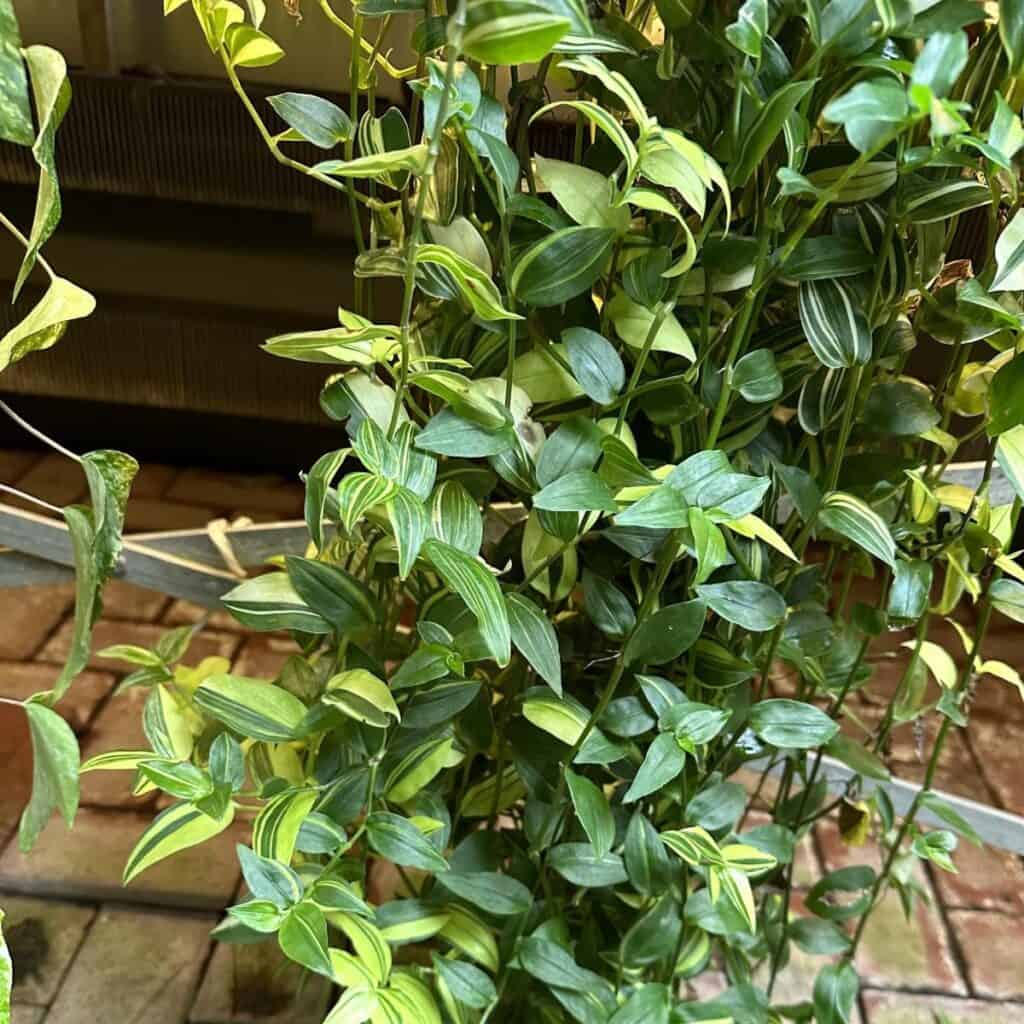

Closing
Tradescantia plants stand out with six remarkable traits. These include their tough nature, fast growth, and ability to thrive in many settings.
- Their colorful leaves and stems catch the eye. Plus, they clean the air well. And they’re easy to grow from cuttings.
- These traits make Tradescantia more than just a pretty plant. They’re popular in homes and gardens worldwide.
- Scientists study them to learn about plant growth and genetics.
- Tradescantia plants are complex and beautiful. They’re not just simple greenery.
- Look closely at their striped leaves and tiny flowers. Notice how they grow and change.
- These plants have much to teach us about nature.
- Next time you see a Tradescantia, take a moment to marvel.
- Think about its unique features and how it thrives.
- These plants show us the wonders of the plant world in our own homes and gardens.




